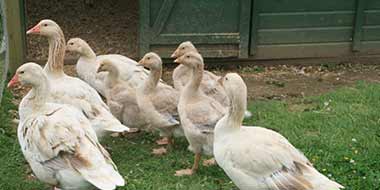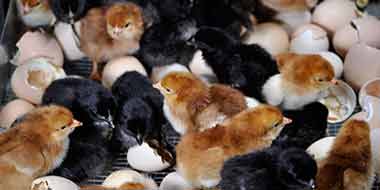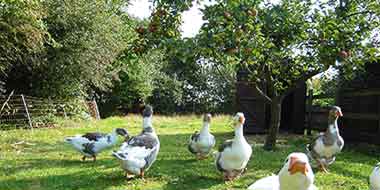
All flocks of chickens have a well-defined social hierarchy known as the pecking order. This article will explain how the pecking order works and offers tips for avoiding conflict in your flock.
The pecking order is a social hierarchy within a flock that could be compared to the rank of each bird. A chicken at the top of the pecking order gets the first choice to do what they want, such as roosting or having food and drink first.
Once the pecking order is established and birds are fully grown, it usually remains unchallenged unless one of the birds becomes stronger, healthier or matures and challenges a hen that’s higher in the pecking order.
An example of the pecking order
Here is an example. If you had five birds in a flock, and we call them birds A to E, then:
- Bird A pecks birds B to E and doesn't get pecked unless there is a challenge from another bird to the pecking order.
- Bird B pecks birds C to E.
- Bird C pecks D and E.
- Bird D pecks bird E.
- Bird E pecks no one unless challenging her position at the bottom of the flock. She gets pecked the most. .
Even when the pecking order of chickens is established, it is constantly re-assessed and policed by small aggressive actions. This can be a dominant bird giving a short sharp peck to a subordinate. Sometimes it only needs to be the threat of a peck which I like to compare to a hen giving another hen a dirty look!
The bird at the bottom of the pecking order has the least ‘rights’ in the flock and will usually be the last to the food and will ‘skirt’ around food that is scattered for them, nipping in to grab a beak full when possible. She has last rights to food and other resources.
The cock is at the top of the pecking order
At the top of the pecking order is usually the cock, assuming one is in the flock. It is common for him to rush over to a squabble to ‘sort things out.’ This can be advantageous within a flock to keep the peace, and flocks with a male bird are generally more settled.
Tips to avoid conflict.
Chickens are best kept in small flocks. The most conflict will occur around resources such as food, water and the best roosting places. Allow enough roosting space and provide multiple feeding and watering points around your chicken run so birds lower in the pecking order can have a chance to eat and drink without getting bullied.
The following clip, from the BBC documentary “The Private Life of… Chickens” shows the pecking order in action:
Where did the pecking order come from?
It is thought that chickens inherited a pecking order from their ancestors, the Red Jungle Fowl, who evolved with a pecking order. The Jungle Fowl is the ancestor of the domesticated chickens we have today.
There are a lot of predators in the jungle. For the Red Jungle Fowl, the pecking order has successfully evolved because when food is available, there are no fights that would attract attention to the flock, putting them at risk of being discovered by predators.
The strongest bird at the top of the pecking order got to eat first, ensuring their survival and would pass on their genes, enabling the survival of future generations.
Introducing new chickens changes the pecking order
Introducing new chickens is very stressful for the flock because the pecking order needs to be re-established.
It is usually best to keep birds of similar ages together to prevent younger birds from getting bullied or older birds constantly challenged for their position in the pecking order as younger birds mature.
Here is guidance for introducing new chickens to the flock to help you make it less stressful for you and your birds.




